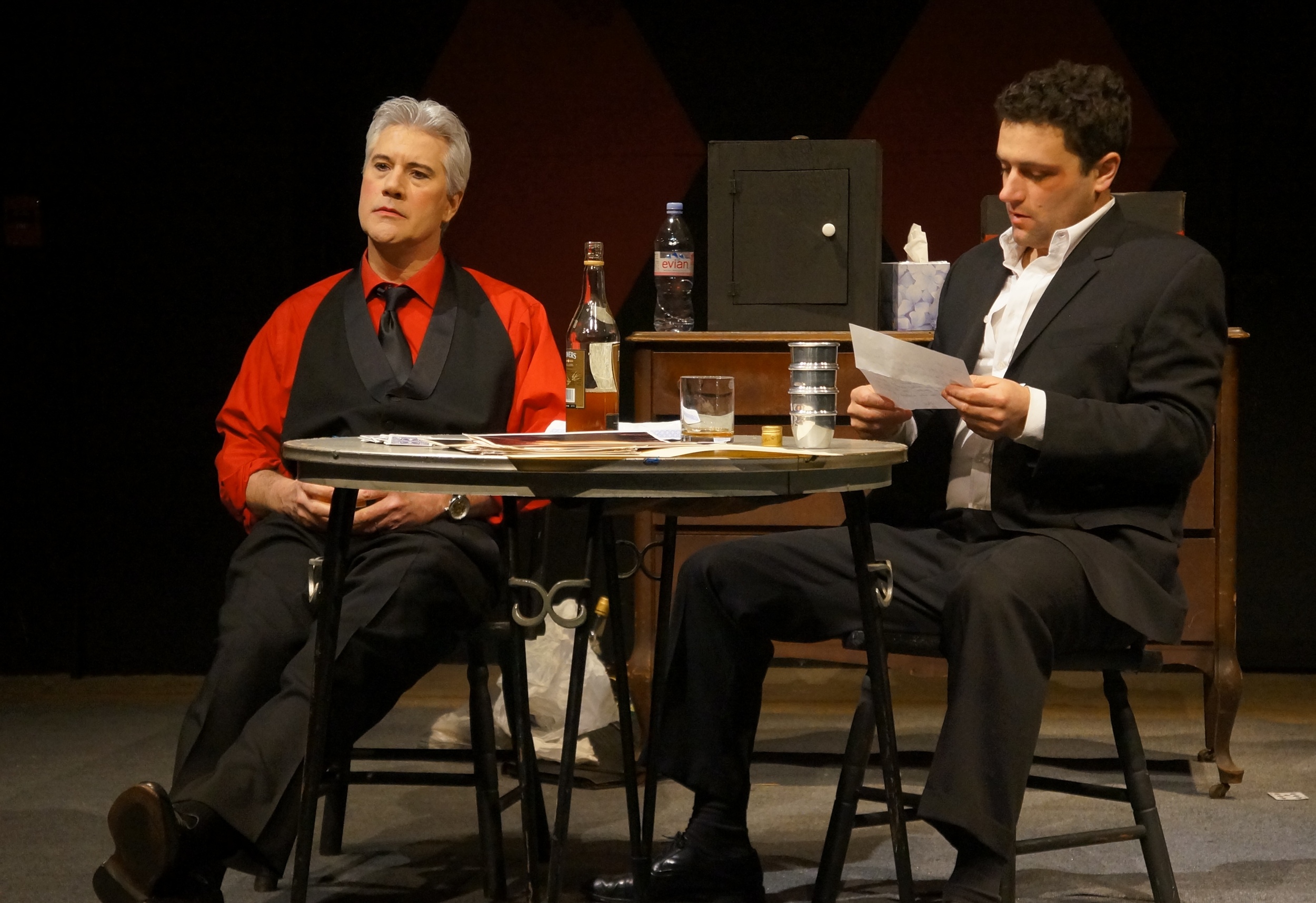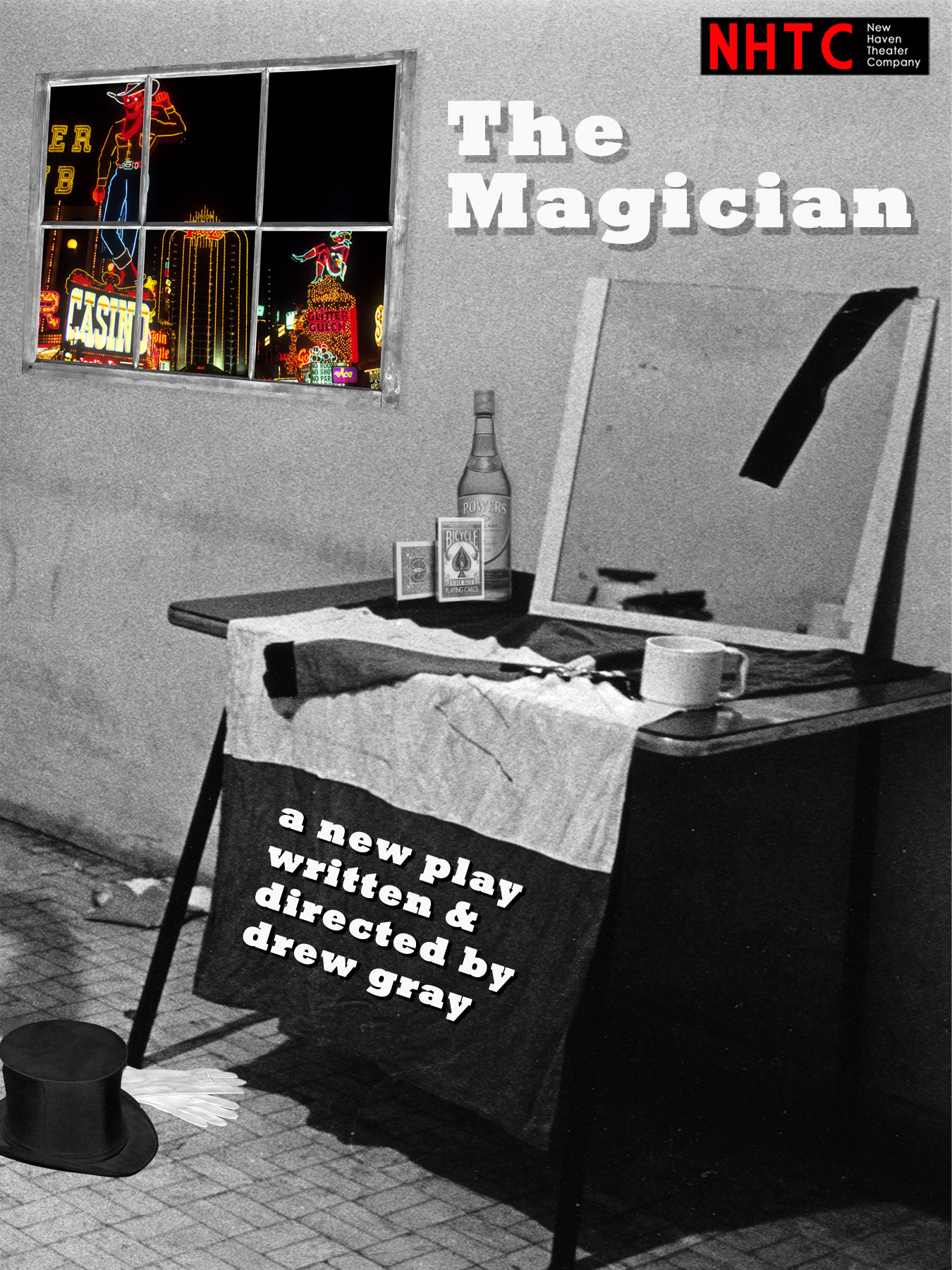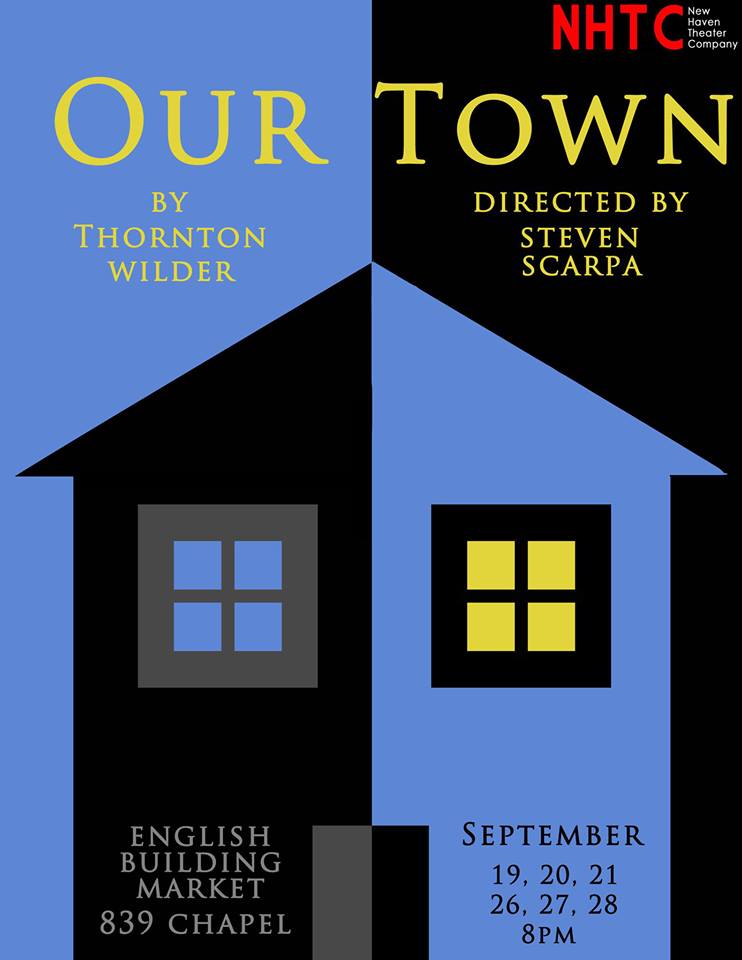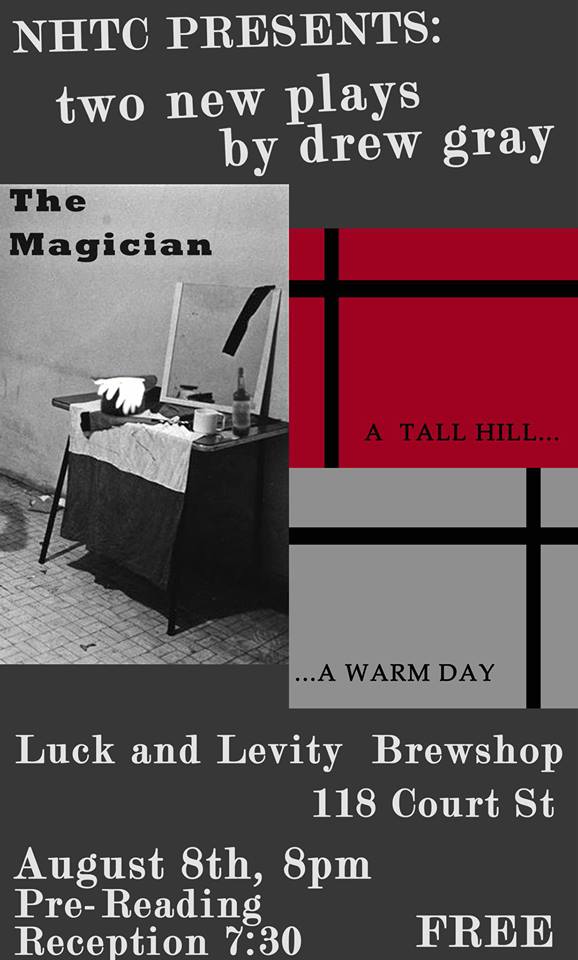Preview of A Public Reading of an Unproduced Screenplay about the Death of Walt Disney, New Haven Theater Company
What does the name “Walt Disney” make you think of? Cute little animated figures? The Mickey Mouse Club? The founder of a vast entertainment conglomerate? An affable old gent on Sunday night television? Architect of state of the art amusement parks? Eccentric who wanted to freeze his corpse for eventual resurrection? A cipher behind a brand?
To J. Kevin Smith, playing a guy most people call “Walt,” in the New Haven Theater Company’s latest production, Lucas Hnath’s A Public Reading of an Unproduced Screenplay about the Death of Walt Disney, brings to mind the phrase “creative genius.” Walt, for Smith as for most of us, is the figure behind “beautiful animation, classic films, and also a fatherly figure” on The Wonderful World of Disney, which ran for decades but, if you were alive before Disney’s death in 1966, chances are you saw Walt himself on the show.
That kindly view of Disney is one Smith shares with most people; he fondly mentioned the Mouseketeers and those great theme parks. But Smith, who for years in the 1980s worked as a sales rep/manager/director handling video-cassette distribution, the Disney company stands for a very “aggressive” approach to protecting copyrights and maintaining “the image of the brand.” “And for good reason,” Smith pointed out, “Disney lost the rights to some of his early cartoon shorts,” so the need to protect his intellectual property from theft by his studio’s many competitors was quite real.
For Smith, though, it’s important to see how that level of commitment “permeated his creative life, and caused fall out with his family,” making Disney “not always the most likeable guy.” Smith sees him in the company of other of our favorite “driven” success stories, men like Steve Jobs, Nicholas Tesla.
J. Kevin Smith as Walt Disney
Lucas Hnath, an up-and-coming playwright who won an Obie award for his best-known play Red Speedo, grew up minutes from Disney World in Orlando, Florida. His play gives us a comic take on a family drama in which Disney gathers relations together to prepare them for his death. “In a sense,” Smith says, “the play is about Disney, as written and performed by others, and it’s also a script as if written by Disney for his family.” The cast consists of Smith as Disney, Steve Scarpa as Walt’s brother Roy, Melissa Smith as Walt’s daughter, and Trevor Williams as her husband Ron Miller.
The script, Smith said, is “mostly dialogue in which characters speak back and forth and past each other in short bursts.” The challenge, he said, is “to get and keep the rhythm, to figure out how to make the stylized speech natural to [the characters] and keep it consistent.” The conceit of the play is that Disney is actually reading the script with his family, but the audience may not be sure when something is in the alleged script or not.
The play is directed by the NHTC’s resident playwright Drew Gray who did a great job directing Trevor, the troupe’s most off-beat offering thus far, last spring. The kinds of plays that attract NHTC can’t really be pigeon-holed. They’ve had great success with classics like William Inge’s Bus Stop, with more contemporary plays like Will Eno’s Middletown and Rachel Axler’s Smudge, and with small-cast plays like Proof and Doubt and Speed the Plow. They’ve also succeeded with big cast plays like Our Town and Urinetown. Last fall, the troupe gave a special staged reading of Arthur Miller’s Incident at Vichy, an aptly chosen offering. Now, they are back with another “reading” of sorts. The focus on a rich, successful man, something of a megalomaniac, may seem all too apt as well.
Disney, as Smith reminded me, “named names” to the House Un-American Activities Committee in 1947 and expressed his view that the union that tried to mount a strike at Disney Studios was organized by Communists. Smith called Disney “a complicated guy,” and said the play shows “the downside” of his success “but does not limit its view to that.” Smith mentioned that “things included in the script are not necessarily factual” but derive “from the folklore” of “Uncle Walt.”
Smith said his performance is not a mimicry of Disney and that he’s eager to have a lead role in a production, which hasn’t been the case since his performance as the satanic stranger in Conor McPherson’s The Seafarer. Steve Scarpa read Hnath’s play two years ago and said it was “like nothing I’ve ever seen before” and “something we could do really well.”
Heigh-ho, heigh-ho, it’s off to work they go.
A Public Reading of an Unproduced Screenplay about the Death of Walt Disney
By Lucas Hnath
Directed by Drew Gray
New Haven Theater Company
November 8th, 9th, 11th, 15th, 16th, 17th, 18th
The NHTC stage @ English Building Markets, 839 Chapel Street












